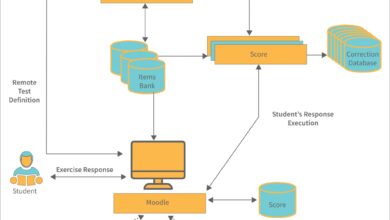System Board: 7 Essential Facts You Must Know Now
Ever wondered what truly powers your computer? It’s not just the processor or RAM—deep inside, the real hero is the system board. This tiny powerhouse connects everything and makes your device run smoothly. Let’s dive into what makes it so crucial.
What Is a System Board?

The term system board might sound technical, but it’s actually the backbone of any computing device. Also commonly known as the motherboard in personal computers, the system board is the primary printed circuit board (PCB) that houses and connects all critical components of a system. Without it, your CPU, memory, storage, and peripherals wouldn’t be able to communicate.
Definition and Core Function
A system board serves as the central hub that links the various hardware components of a computer or electronic device. It provides electrical connections through traces—thin copper pathways etched onto the board—allowing data and power to flow between the CPU, RAM, GPU, storage drives, and input/output ports.
- Acts as the main communication platform for all hardware.
- Distributes power from the PSU (Power Supply Unit) to components.
- Hosts firmware like BIOS or UEFI for system startup.
Common Synonyms and Usage
While “system board” is a technically accurate and widely used term, especially in enterprise and industrial contexts, it’s often interchanged with motherboard, mainboard, or logic board. The choice of term can depend on the device type or manufacturer.
- Motherboard: Typically used in desktop PCs.
- Logic board: Apple’s preferred term for Macs.
- Mainboard: Common in industrial and embedded systems.
“The system board is the skeleton and nervous system of a computer combined—without it, there’s no life.” — Tech Hardware Journal, 2023
Historical Evolution of the System Board
The journey of the system board mirrors the evolution of computing itself. From massive, room-filling machines to sleek laptops and smartphones, the system board has undergone dramatic miniaturization and performance enhancements.
Early Computing and Mainframes
In the 1940s and 1950s, computers like the ENIAC didn’t have system boards as we know them. Instead, they used discrete wiring and vacuum tubes connected through large panels. The concept of an integrated circuit board didn’t emerge until the 1960s with the advent of PCB technology.
- First PCBs used single-layer designs.
- Early mainframes had modular backplanes instead of unified boards.
- Interconnections were manual and error-prone.
Rise of Personal Computers
The 1980s marked a turning point with the release of the IBM PC in 1981. Its system board set the standard for architecture, including the use of expansion slots and standardized connectors. This era introduced the AT (Advanced Technology) motherboard, which became the blueprint for future designs.
- Introduction of ISA (Industry Standard Architecture) slots.
- Integration of CPU, RAM, and ROM on a single board.
- Mass production lowered costs, enabling home computing.
Modern Miniaturization and Integration
Today’s system boards are marvels of engineering. With multi-layer PCBs (up to 12 layers), high-density interconnects (HDI), and surface-mount technology (SMT), they pack immense power into tiny spaces. Devices like Raspberry Pi and smartphones use custom system boards that integrate nearly all components into a single chip (SoC).
- Use of BGA (Ball Grid Array) packaging for CPUs.
- Onboard GPUs, Wi-Fi, and Bluetooth reduce need for expansion cards.
- Support for high-speed interfaces like PCIe 5.0 and DDR5 RAM.
Key Components of a System Board
Understanding the anatomy of a system board helps in troubleshooting, upgrading, or building a computer. Each component plays a vital role in the system’s operation.
Central Processing Unit (CPU) Socket
The CPU socket is where the processor is installed. It’s designed to match specific CPU types—Intel uses LGA (Land Grid Array), while AMD uses PGA (Pin Grid Array). The socket determines compatibility with processors and affects upgrade paths.
- LGA 1700 for Intel 12th–14th Gen CPUs.
- AM5 socket for AMD Ryzen 7000 series.
- Thermal design must accommodate heat dissipation.
Memory Slots (RAM)
RAM slots allow the installation of memory modules. Most modern system boards support DDR4 or DDR5 SDRAM in dual, triple, or quad-channel configurations. The number of slots and supported speed impact overall system performance.
- Typically 2 to 4 DIMM slots on consumer boards.
- Support for XMP (Intel) or DOCP (AMD) for overclocking.
- Maximum capacity ranges from 64GB to 128GB or more.
Chipset and South/North Bridge
The chipset acts as the traffic controller, managing data flow between the CPU, memory, storage, and peripherals. Modern chipsets integrate what were once separate northbridge (high-speed) and southbridge (I/O) functions.
- Intel Z790 and AMD X670 are high-end chipsets.
- Handles PCIe lanes, USB ports, SATA connections.
- Determines overclocking support and expansion capabilities.
Expansion Slots (PCIe)
Peripheral Component Interconnect Express (PCIe) slots allow the addition of graphics cards, NVMe SSDs, sound cards, and network adapters. Slots come in x1, x4, x8, and x16 sizes, indicating bandwidth.
- PCIe 4.0 and 5.0 offer doubled bandwidth over previous versions.
- GPU typically uses x16 slot for maximum performance.
- M.2 slots use PCIe lanes for ultra-fast SSDs.
Power Connectors and Voltage Regulators
The system board receives power from the PSU via 24-pin ATX and 8-pin EPS connectors. Voltage regulator modules (VRMs) then convert this power into stable voltages required by the CPU and other components.
- High-quality VRMs are crucial for overclocking stability.
- Phases (e.g., 12+1 phase) indicate power delivery efficiency.
- PWM (Pulse Width Modulation) controls voltage dynamically.
Types of System Boards by Form Factor
System boards come in various sizes and layouts, known as form factors. These determine compatibility with cases, power supplies, and cooling solutions.
ATX and Its Variants
ATX (Advanced Technology eXtended) is the most common desktop form factor, measuring 12 x 9.6 inches. It offers ample space for expansion slots, cooling, and features.
- Standard ATX supports 7 expansion slots.
- Micro-ATX (9.6 x 9.6 in) is smaller but still versatile.
- Flex-ATX is used in compact systems.
Mini-ITX for Compact Builds
Measuring just 6.7 x 6.7 inches, Mini-ITX is ideal for small form factor (SFF) PCs. While limited in expansion, it’s popular for HTPCs (Home Theater PCs) and portable rigs.
- Only one PCIe slot, usually x16.
- Low power consumption and quiet operation.
- Used in industrial automation and embedded systems.
Server and Embedded System Boards
Server-grade system boards are built for reliability, scalability, and remote management. They often support ECC RAM, multiple CPUs, and redundant power supplies.
- Support for dual Intel Xeon or AMD EPYC processors.
- Integrated IPMI (Intelligent Platform Management Interface).
- Used in data centers and cloud infrastructure.
“Choosing the right form factor is like picking the right foundation for a house—it determines everything that comes after.” — PC Builder’s Handbook, 2022
How a System Board Works: The Communication Backbone
The system board isn’t just a physical platform—it’s an intelligent network that manages data flow, power distribution, and hardware coordination.
Data Transfer via Buses
Buses are communication pathways that carry data between components. The system board hosts several types:
- Front-Side Bus (FSB): Older systems used this to connect CPU and northbridge.
- Direct Media Interface (DMI): Intel’s link between CPU and chipset.
- Infinity Fabric: AMD’s high-speed interconnect.
Modern systems use point-to-point links like PCIe instead of shared buses, reducing bottlenecks.
Role of BIOS and UEFI Firmware
When you power on your computer, the system board’s firmware—BIOS (Basic Input/Output System) or UEFI (Unified Extensible Firmware Interface)—initializes hardware and starts the boot process.
- Performs POST (Power-On Self-Test) to check hardware.
- Allows configuration of boot order, CPU settings, and fan control.
- UEFI supports larger drives, secure boot, and graphical interfaces.
Updating firmware can improve compatibility and security. Always follow manufacturer guidelines—Intel’s guide to BIOS updates is a reliable resource.
Power Management and Thermal Regulation
The system board plays a key role in energy efficiency and heat control. It monitors temperatures, adjusts fan speeds, and can enter low-power states when idle.
- Supports ACPI (Advanced Configuration and Power Interface) standards.
- VRMs throttle power under high thermal load.
- Some boards feature AI-powered fan tuning.
Troubleshooting Common System Board Issues
When a computer fails to start or behaves erratically, the system board is often a suspect. Knowing how to diagnose issues can save time and money.
Diagnosing Power and Boot Failures
If your system doesn’t power on, check the following:
- Ensure the 24-pin and CPU power connectors are securely attached.
- Test with a known-good PSU.
- Listen for beep codes or check LED debug indicators.
Some boards have built-in diagnostic LEDs that show CPU, RAM, VGA, or BOOT issues.
Dealing with Overheating and Short Circuits
Overheating can damage the system board permanently. Causes include poor airflow, dust buildup, or failed thermal paste.
- Clean dust from heatsinks and connectors.
- Ensure the CPU cooler is properly mounted.
- Check for swollen capacitors—a sign of electrical failure.
Short circuits may occur if the board touches the case. Always use standoffs and insulating washers.
Firmware and Driver Conflicts
Outdated or corrupted BIOS/UEFI can cause instability. Similarly, incorrect drivers may prevent hardware from functioning.
- Update firmware using manufacturer-provided tools.
- Reset CMOS to default settings if unstable.
- Use Windows Device Manager or Linux
lspcito verify hardware detection.
Choosing the Right System Board for Your Needs
Selecting a system board isn’t just about compatibility—it’s about future-proofing, performance, and value.
Compatibility with CPU and RAM
The most critical factor is ensuring the system board supports your chosen CPU and RAM type.
- Check socket type (e.g., LGA1700, AM5).
- Verify RAM generation (DDR4 vs DDR5) and speed support.
- Use tools like PCPartPicker to validate compatibility.
Expansion and Connectivity Options
Consider your need for extra GPUs, storage, or peripherals.
- More PCIe slots allow for multi-GPU setups or capture cards.
- USB-C, Thunderbolt, and Wi-Fi 6E are valuable additions.
- M.2 slots enable fast NVMe SSDs for OS and applications.
Budget vs. Performance Trade-offs
High-end boards offer better VRMs, overclocking, and aesthetics, but may not be necessary for casual users.
- Budget boards (e.g., B660, B650) are great for standard builds.
- Premium boards (e.g., Z790, X670E) suit enthusiasts and content creators.
- Consider long-term upgrade paths before buying.
Future Trends in System Board Technology
The system board is evolving rapidly, driven by AI, IoT, and quantum computing demands.
Integration of AI and Machine Learning
Modern system boards are incorporating AI for predictive maintenance, power optimization, and thermal management. ASUS’s AI Overclocking and MSI’s AI Cooling are early examples.
- AI monitors system behavior and adjusts settings in real time.
- Reduces manual tuning and improves efficiency.
- Future boards may use on-die AI accelerators.
Sustainability and Eco-Friendly Designs
Manufacturers are focusing on reducing e-waste and energy consumption.
- Use of recyclable PCB materials and lead-free soldering.
- Energy-efficient VRMs and low-power standby modes.
- ASUS’s Eco Mode reduces power by up to 30%.
Modular and Customizable Boards
The future may see modular system boards where users can swap out chipsets, I/O panels, or VRM modules.
- Reduces obsolescence and supports upgrades.
- Projects like RISC-V-based open hardware are gaining traction.
- Custom boards for edge computing and robotics.
What is the difference between a system board and a motherboard?
The terms are often used interchangeably, but “system board” is a broader term that applies to any electronic device, including servers, embedded systems, and industrial machines. “Motherboard” typically refers to the main board in consumer PCs. Functionally, they are the same.
Can a system board be repaired if damaged?
Minor issues like faulty capacitors or broken connectors can sometimes be repaired by skilled technicians using soldering tools. However, major damage (e.g., cracked PCB, burnt traces) usually requires replacement. Always consult a professional before attempting repairs.
How long does a system board last?
With proper care, a system board can last 7–10 years. Factors like heat, power surges, dust, and overclocking affect lifespan. Using a surge protector and keeping the system clean can extend its life significantly.
Does the system board affect gaming performance?
Indirectly, yes. While the GPU and CPU handle most gaming tasks, the system board influences performance through PCIe bandwidth, RAM speed support, and power delivery stability. A high-quality board ensures consistent performance, especially during overclocking.
Can I upgrade my system board without changing other components?
It depends. If the new board uses the same CPU socket and RAM type, you might reuse them. However, switching platforms (e.g., Intel to AMD) requires changing the CPU and possibly RAM. Always check compatibility before upgrading.
The system board is far more than just a piece of hardware—it’s the central nervous system of any computing device. From its historical roots in mainframes to its modern role in AI-driven systems, the system board continues to evolve. Whether you’re building a PC, troubleshooting a server, or exploring embedded systems, understanding the system board is essential. By choosing the right board, maintaining it properly, and staying informed about future trends, you ensure your system remains powerful, reliable, and ready for what’s next.
Further Reading:









